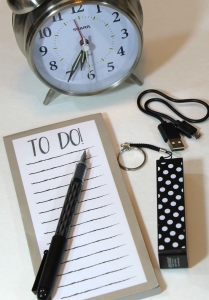 Crush Debt With An Effective Financial Plan
Crush Debt With An Effective Financial Plan
Holiday spending is a notorious budget buster, but with Stress Free Holiday Shopping Tips You Can Use Now your fall and winter holidays can be affordable, satisfying and fun!
A Debt Free Holiday is a Stress Free Holiday
Holidays are stressful enough without the worry and regret of additional debt. Being in debt just plain sucks! Are you struggling with debt, and feel like you are getting deeper and deeper? Stop digging and start planning!
If you are dreaming about starting your own business but can’t afford to leave your day job, that’s another reason to stop the same spending pattern and start planning.
Cut the worry and guilt and avoid adding debt by starting your stress free holiday shopping now in the top three budget busting categories: travel, gifts and food.
It is all well and fine to tell yourself that this year you are going to be frugal, but let’s be real. Instead of giving out adorably boxed home-made cookies, are you likely to end up in line at the mall in December with a big load of guilt and a smoking hot credit card in hand?
Plan your spending and shopping strategies now. Come the New Year, you can look back at a holiday season that did not leave you in more debt! You’ve got this!
Take Advantage of Tax Free Shopping
When football season is kicking off and every store is packed with back- to-school promotions. Keep an eye out for tax free shopping days in your region.
Each year, more and more states offer tax-free shopping days or weeks for consumer goods ranging from clothing to computers! It is perfectly legit to snag a few things off your holiday shopping list during the tax-free period.
The good news is, you do not have to have a third grader in tow to take advantage of the sales! Nor do you have to be a resident of the state. Take advantage of the sales and reduced taxes to score some planned for purchases for the coming holidays.
Start Now for Stress Free Shopping for Holiday Travel Deals
The United States Department of Transportation reports that the Thanksgiving and Christmas/New Year’s holiday periods are among the busiest long-distance travel periods of the year. With higher demand comes higher pricing.
If you haven’t already, now is the time to start shopping for holiday travel tickets for you or for family members. Especially if you are planning to fly, shopping now is a very good plan. Not only will you be able to get better prices, you are more likely to get the flight you want before it fills up.
Don’t forget to look for hotel deals if you will not be bunking at Grandma’s or if the family is driving over a period of days. Remember a heated indoor pool is a great way to wear out kids who have been stuck in the back seat all day, especially if you can book that room at a reduced rate!
We Love Lay-Away for Holiday Gift Shopping
Thank goodness for the reappearance of the “Lay Away” plan at so many large retailers! This old-fashioned payment method is a great way to avoid going into debt for holiday spending.
The revival of the Lay Away payment plan lets you buy your gifts now and divide up the payments between now and the holiday. You get to do your shopping early enough to avoid the rush and avoid any debt!
Since the gifts stay at the store until they are paid for, you don’t have to worry about hiding toys and bicycles from curious kids!
Most Law Away plans require 10 to 20% down with the remaining amount paid over a six to eight week period.
How it works: Say you have $300 worth of presents to lay-away. Most stores have a small lay-away fee of around $5. If you then put down 20% that would be $60 for a total to start of $65. You will then pay $30 each week for eight weeks.
Shop and lay-away now. You will have all your gifts paid off and ready to wrap the first half of December. Free and clear, with no January credit card hangover! How cool is that?
Rock Your Holiday Food Shopping
How many big meals and traditional recipes do you prepare every year? Are you expecting house guests in coming months? Do you tend to run to the store for your cooking and baking supplies a few days before the big event?
The grocery stores tend to offer attractive holiday specials or loss-leaders during the week or two before major holidays. Those bargains are designed get you in the store with the expectation that you will buy all the things you need while you are there. Yup, even if the rest of the items on your list are not on sale.
Spread It Out
You don’t have to make yourself crazy trying to find rock-bottom prices on every item.
Control your spending and give yourself a little breathing room. Instead of stressing, plan your major holiday meals now! Include a complete “master list” of ingredients for all your special meals, treats and party foods.
Want a little extra help with planning holiday cooking? I really like the free meal planner sheets from the Organized Home site.
Look over your master list for items that may be safely stored for longer periods. Long shelf-life items are canned goods, frozen foods and baking supplies. Remember non-food items that run out faster during holidays. Stock up on toilet paper, napkins and paper plates!
Start now to pick up a few things from your list every time you go grocery shopping. You can spread the cost over several weeks. Bonus: You won’t be dragging it in the house and putting it all away at the same time. Win-Win!
Remember to mark the items off your Master List. Look at what you have accomplished!
Planning now for your holiday travel, gift giving and special meals will keep you out of debt and give you more time to enjoy your holidays.
Do you have some budget areas that are a problem? Would you like more tips for Stress Free Holiday Shopping? Leave your questions and comments below!








